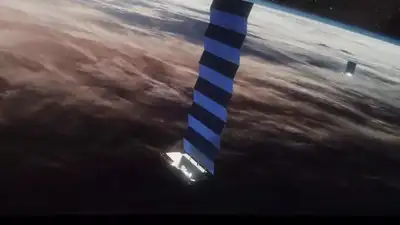
A recent NASA-led study, highlighted by New Scientist, reveals that this accelerated re-entry is caused by increased solar activity during the solar maximum—a period of intense solar storms and radiation. These storms heat and expand Earth’s upper atmosphere, increasing atmospheric drag on satellites and hastening their descent. This shift poses new challenges for satellite operators, especially those managing large constellations, as space weather increasingly influences satellite lifespans and orbital dynamics.The Sun also has an about 11-year cycle characterised by varying degrees of activity. At its peak, known as the solar maximum, solar storms intensify and become more intense. The last solar maximum was achieved in late 2024 when the Sun was most active in more than a decade. The Sun releases powerful outbursts of charged particles and electromagnetic radiation during this time, causing geomagnetic storms on Earth. These storms have long-range impacts beyond the northern lights. They disrupt the upper atmosphere of Earth and greatly enhance atmospheric drag, which is now being recognised as an essential factor speeding up the re-entry of satellites.
NASA scientist explains geomagnetic storms speeding up satellite re-entry
Dr. Denny Oliveira, a scientist at NASA who conducted the research, confirmed that satellites in LEO are re-entering the Earth's atmosphere much more rapidly during geomagnetic storms. "We found that when we have geomagnetic storms, satellites re-enter faster than expected [without solar activity]," Oliveira said.
Usually, a decommissioned Starlink satellite can sit in orbit for about 15 days before atmospheric drag pulls it down. But over the past few months, that timeframe has been significantly reduced. In one reported incident, 37 Starlink satellites re-entered Earth's atmosphere just five days after launch—well short of the expected orbital lifetime. This hastened decay presents special challenges for massive satellite constellations like SpaceX's Starlink initiative. Already more than 7,000 Starlink satellites occupy space, with tens of thousands more planned for launch, the impacts of heightened solar activity may become amplified operational challenges and risk.NASA has followed 523 Starlink satellite re-entries from 2020 to 2024—a figure set to increase dramatically. "For the first time ever, we are experiencing so many satellites re-entering at once," Oliveira commented. "Soon, we'll be observing satellites re-entering on a daily basis."
Environmental scientists warn of long-term effects from satellite re-entry
Although the removal of malfunctioning satellites through a quick de-orbiting can decrease space debris in the short term, it poses another group of problems. When satellites re-enter, not everything is totally burned away. Pieces from heavier materials will survive and penetrate lower atmospheric layers.Environmental scientists are also sounding the alarm over the possible chemical effect. Satellite combustion emits substances such as aluminum oxide, which may build up in the mesosphere and potentially affect atmospheric chemistry and climate control over a period of time. Aside from the environmental concerns, more satellite activity also raises the threat of collisions in orbit. With more satellites being launched into comparable orbital lanes, the room for mistake closes in. There was one reported incident in 2019 when the European Space Agency performed a maneuver to move one of its Earth-monitoring satellites out of the way of an imminent collision with a Starlink satellite.Space agencies and industry players are now being called upon to create more resilient traffic management systems and to take space weather forecasting into account in operational planning.Also Read | Sunita Williams and Butch Wilmore emerge stronger following recovery from Starliner mission extended until March

 3 weeks ago
1752
3 weeks ago
1752




























 English (US)
English (US)